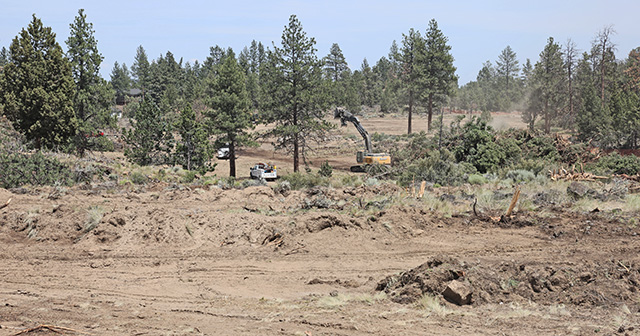What you need to know about the knapweed root weevil
Published 12:00 am Sunday, October 6, 2019

- Loving each other ladybugs and weevils. (123RF)
I had a backyard experience several weeks ago that brought to mind the quote from Sir Walter Scott, “Oh, what a tangled web we weave, when first we practice to deceive!”
I discovered an insect I had never seen before sitting on a lawn sprinkler head. Although I thought it was dead, I added a few leaves to a container with the intention of taking the insect to the OSU Extension Plant Clinic the following day for identification.
After several hours of computer and book research, my plant clinic partner and I found a match.
The specimen in question was a knapweed root weevil — cyphocleonus achates. The weevil is a biological control for both diffuse and spotted knapweed, a noxious weed in Central Oregon. It’s one of the good guys you should feel a pang of guilt about if you use herbicides to kill the noxious weed.
The weevil was first released in the United States in 1987, according to a Cornell University fact sheet. It has been used in Eastern Europe and Asia as an effective control measure with great success. The weevil was released in the Western states and also some of the Midwest states including Minnesota, Nebraska and South Dakota. There are established populations in Colorado, Montana and Wyoming and individuals have been recovered in Oregon. I guess my find could be counted as one of those.
I found the weevil on the south side of the house, which is, in general, a natural area. In plain language that equates to no lush lawn but an ample supply of knapweed rosettes and poor soil.
The habit of the weevil is to sit perfectly still and, when disturbed, to drop to the ground and play dead. My specimen didn’t drop to the ground, instead held a tight grip to the sprinkler head — so tight that I ended up leaving one appendage behind. Sorry. These weevils do not bite nor do they fly. They are rapid walkers that compensate for their inability to fly.
Adults emerge from knapweed roots in July through late September. The adults feed on the tender knapweed leaves in the center of the rosettes.
Mating begins within one to two weeks of emergence, and egg-laying begins in August. Females mate repeatedly and can deposit an average of 45 eggs over their entire 10-week life span.
The procedure to lay each egg takes about 25 minutes to complete. Females excavate headfirst into the soil and chew an attachment location on the plant crown. Then they back out and reverse into the site to deposit a single egg, securing it in place with soil. The excavation site will be filled before moving on to repeat the process. Adults die before winter.
During the first two stages of larvae development, the instar (the stage of life between molts) will feed within the root until fall, then rest over winter and begin feeding again in spring. The larvae feeding destroys the interior of the taproot and exposes it to the bacterial and fungal invasion which helps kill the plant.
The pupation occurs in late spring or early summer lasting about two weeks. The emerging adult weevils chew through the root and crawl to the surface to begin their limited span of life.
Backtracking to Sir Walter Scott’s quote, the deception with the knapweed root weevil is that it perfectly mimics the dried knapweed blossom colors of muted brown and gray, complete with dark markings similar to those on the dried stems. The perfect match of color and marking would make it difficult for a predator to locate and capture it, especially given the ability to play dead. It took me a day to realize that the weevil was alive.
I did find a second one, but instead of capturing it, I gave it a gardener blessing and told it to go do good work.
Nature has provided camouflage and mimicry traits to ensure survival of species. Each species has evolved with their own strategies for survival: the need to eat, to avoid being eaten, to mate and to reproduce.
If you hear stories about a lady crawling around on the grass on the east side of Bend — it’s OK, it’s only me.
— Reporter: douville@bendbroadband.com







